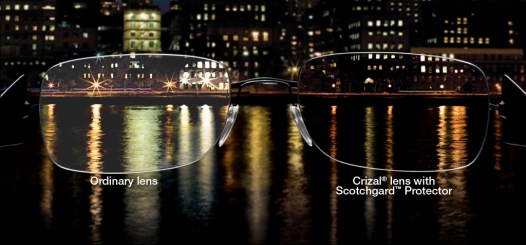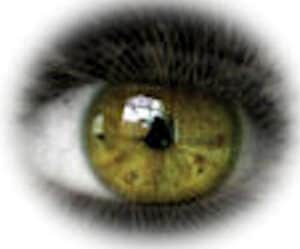Anti-reflective coating is applied to the surface of the eyeglass lens to optimize vision by reducing glare. Ideally, it should be applied to both the front and back surface of the lens for maximum benefit.
It serves several purposes:

- Reduces reflections off of surfaces like wet roads and glare from headlights. For this reason it is recommended for night driving. The above photo shows an anti-reflective coating on the right lens ‘dampens’ water reflections. (from Crizal ®)
- Reduces internal lens reflections, especially important for those with thick eyeglass lenses. High index lenses, which are the lighter, thinner premium lenses, may have annoying internal reflections, which are minimized by an anti-reflective coating.
- Reduces reflections of light which hit the eyeglass lenses from behind and reflect back into the eye.
- Cosmetically more attractive appearance, because the coating reduces glare from the front surface of the lens. The eyeglass lens with an anti-reflective coating and no surface reflections seems to ‘disappear:’
 .
.
Reflections off the surface of the lenses on the left make it difficult to see the person’s eyes. The lenses on the right have an AR coating which reduces reflections off the surface. (from Crizal®)
